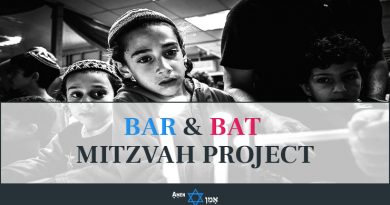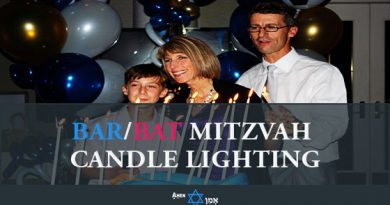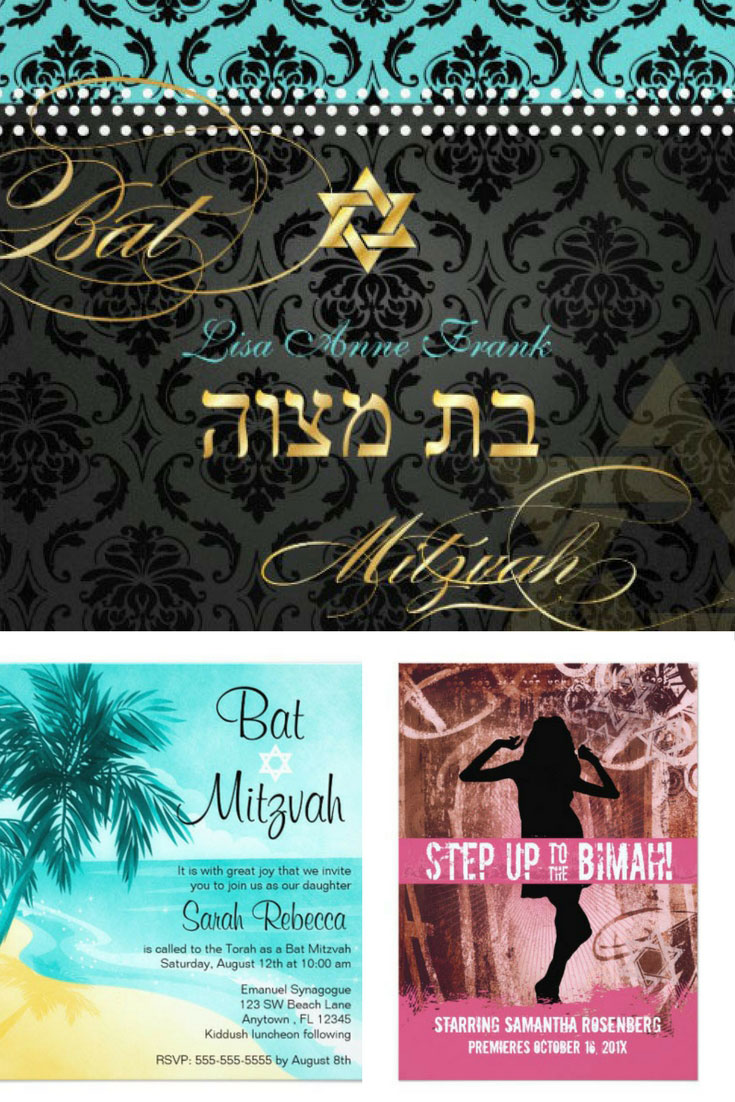10+ Bar/Bat Mitzvah Symbols & Signs (And What They Really Mean)
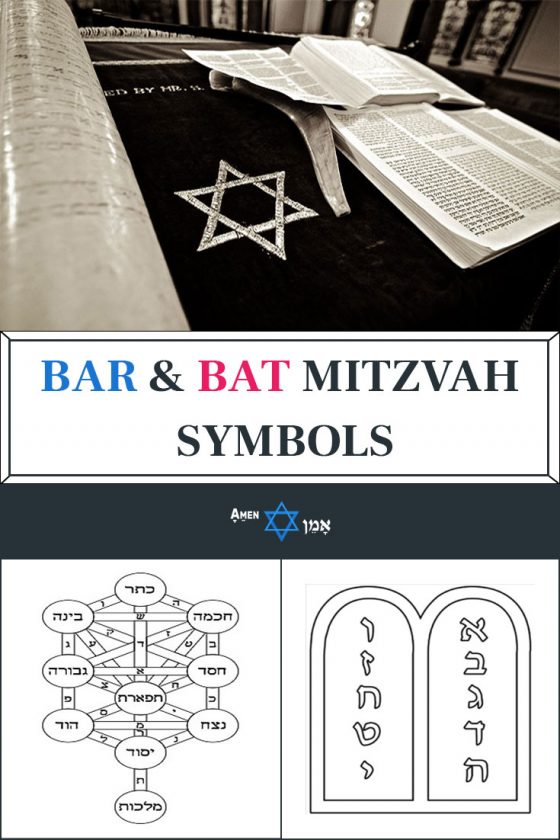
When you attend a Bar/Bat Mitzvah ceremony – you often wonder: “What the hell do all of these random symbols mean anyway?”
Random? That’s cute…
In Judaism, nothing is ever random. EVERYTHING has an underlying meaning… including the Bar/Bat Mitzvah symbols you often see in Bar/Bat Mitzvah ceremonies.
In fact, there are 4 levels of interpretation (also known as PaRDeS) in Jewish scripture used to discover the true meaning behind Jewish signs and symbols:
- Peshat (פְּשָׁט): Simple, straightforward explanation
- Remez (רֶמֶז): Hints – symbolic or allegorical
- Derash (דְּרַשׁ): Deriving meaning through inquiry (by cross-referencing and analysis)
- Sod (סוֹד): Secret, mystical interpretation
In other words – Jewish symbols sometimes have simplistic interpretations, and sometimes they have such deep, philosophical meaning that before you know it – you find yourself in a deeper rabbit hole deeper than the one Alice went through.
And guess what? The rabbit hole starts right here.
In a few moments – you’ll discover:
- What are the most common Bar & Bat Mitzvah symbols?
- What do they really mean?
Ready, Alice?
Let’s get to it…
Kippah
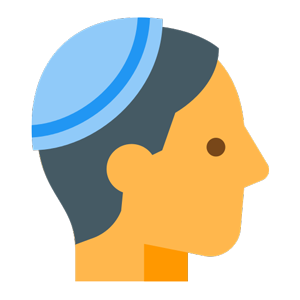
Kippah (or Yarmulke) is the famous headcover Jewish men wear every time they pray, read from the Torah (or other Jewish texts), attend Jewish ceremonies (like Bar Mitzvahs and Jewish weddings), enter a synagogue, attend a funeral or perform any other religious activity.
Note: In non-Orthodox communities, women often wear a Kippah as well.
Contrary to popular belief, there’s no Halachic requirement to wear a Kippah at all times.
However, many Jewish men wear a Kippah as a sign of their piety and their belief in Jewish law.
Another reason Jewish men wear a Kippah is for accountability.
The Talmud states:
“Cover your head in order that the fear of heaven may be upon you” – Shabbat 156b
The Kippah serves as a constant reminder of God’s presence. Or, to quote Rabbi Hunah ben Joshua:
“The Divine Presence is always over my head.” – Kiddushin 31a
In other words: when you walk around with a Kippah all the time – you’re more inclined to behave like a mensch!
Fun Fact: The literal definition of the word Kippah (כיפה) is “dome”. In fact, Iron Dome – Israel’s famous anti-missile defense system, is called “Kippat Barzel” (כיפת ברזל).
The Kippah is a common Bar/Bat Mitzvah symbol for several reasons:
- It’s a symbol of maturity. The Bar Mitzvah ceremony is the first time the boy wears a Kippah as a Jewish adult – subject to the Torah’s commandments.
- Guests wear a Kippah during the ceremony (even if they’re not Jewish – they wear it as a sign of respect). Many times, parents give away customized Kippot as a Bar/Bat Mitzvah favor for their guests.
Tallit

Tallit is the Jewish prayer shawl Jewish men wear during the morning prayer (Shacharit).
Note: In conservative and reform communities, women also wear a (feminine) Tallit.
There are two types of Tallitot:
- Tallit Katan (small Tallit): A small piece of clothing you normally wear under your clothes. This is usually referred to as Tzitzit (ציצית).
- Tallit Gadol (large Tallit): A large prayer shawl you wear on top of your clothes. This is what people usually mean when they say “Tallit” (and the “Tallit” we’re talking about here).
Traditionally, the father buys his son his first Tallit for the Bar Mitzvah. The same is true for girls in conservative and reform communities – where the parents buy their daughter her first Bat Mitzvah Tallit.
Orthodox Jews and reform Jews wear different types of Tallitot. Orthodox Jews wear a full-size Tallit that covers their entire back, while reform Jews wear a smaller Tallit around their neck.
Tip: If you’re getting a Bar Mitzvah Tallit as a gift – make sure you get the right Tallit size.
Did You Know?
In many Ashkenazi communities, men start wearing a Tallit only after they get married.
Tefillin

Tefillin are a pair of small black leather boxes Jewish men wear during the morning prayer.
- The arm Tefillin is placed on the upper arm with 7 straps wrapping the forearm
- The head Tefillin is placed on the forehead
Both Tefillin boxes contain parchment scrolls with verses from the Torah (written in Hebrew).
Like the Tallit – the father usually buys his son his first pair of Tefillin for the Bar Mitzvah.
There are different types of Tefillin:
- Tefillin Peshutim (simple Tefillin): Made of multiple pieces of leather glued together. These are the simplest form of Tefillin, and therefore the cheapest one. They typically don’t last very long.
- Tefillin Dakkot (thin Tefillin) or Tefillin Peshutim Mehudarim (“superior simple Tefillin): They’re made of a single piece of leather, and so offer a slight improvement over Tefillin Peshutim. But they’re still not as durable as thick Tefillin.
- Tefillin Gassot (thick Tefillin): Tefillin Gassot is made of one thick piece of leather (usually cow skin). They’re the highest quality, the most durable, and as you might expect – the most expensive Tefillin type. They’re also the most common one among religious Jews.
Tip: Buying a Tefillin can be tricky. If you’re planning to buy a new pair of Tefillin – make sure to follow our Tefillin buying guide to avoid expensive mistakes.
There are also fun uses for Tefillin in a Bar Mitzvah. Parents often get a Tefillin-shaped Bar Mitzvah cake or serve Tefillin-shaped snacks for dessert.
Torah
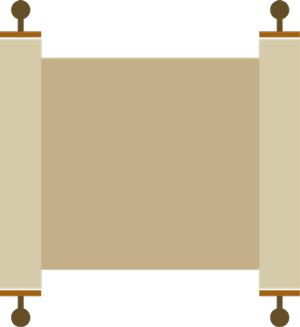
When people mention the word “Torah”, they usually refer to the five books of Moses (also known as Chumash or the Torah of Moses) – the holiest book in Judaism.
But technically, the Torah can mean different things depending on the context:
- The entire collection of the Tanach (תנ”ך): the Hebrew Bible, which is a collection of 24 books divided into three sections:
1. Torah (The Five Books of Moses)
2. Nevi’im (Prophets)
3. Ketuvim (Writings) - The oral Torah: a series of Rabbinical interpretations and commentaries that were first passed through from generation to generation by “word of mouth”, until it was later transcribed into the Talmud and Midrash.
- The entire body of Jewish law and teachings
The literal definition of Torah is “instruction” or “law”. But it’s more than just a dictionary definition. It’s exactly how Jews treat it – as a guide to life.
Every Monday, Thursday and Saturday morning, we read a portion from the Torah during the morning service. When Jewish boys celebrate their Bar Mitzvah, they read a Torah portion and may even chant the Haftarah (a section from the biblical prophets). Sometimes they even lead the entire Shabbat morning service (if they’re trained to do so).
Note: In conservative and reform communities – Bat Mitzvah girls read from the Torah as well.
The Torah reading is the main highlight of the Bar Mitzvah service. It’s the reason why you get up so early on a Saturday morning (usually) to attend the ceremony (or is it because of the candy?).
Torah Pointer (Yad)
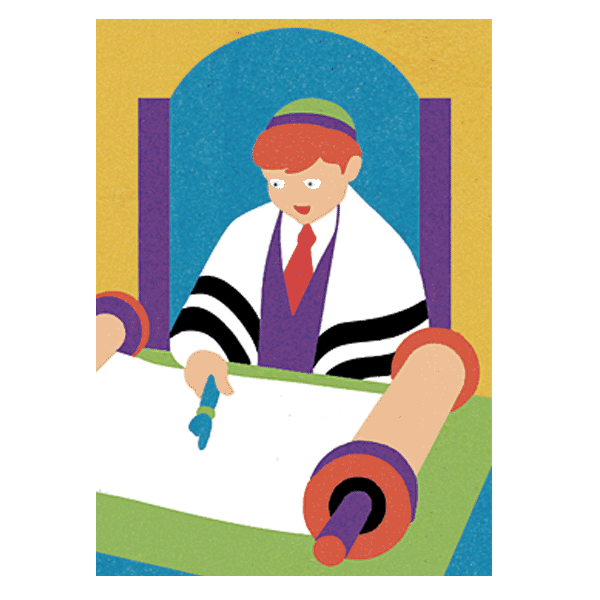
A Yad (יד), which literally means “hand”, is the pointer we use to read from the Torah scroll. It’s designed to protect the scroll from damage (hint: Torah scrolls are handwritten, delicate and VERY expensive).
During their Torah lessons, Bar Mitzvah boys will often practice reading with their Torah pointer to get used to it before the “live show”.
A Torah pointer is a popular Bar Mitzvah gift, especially for Orthodox Jewish boys. Most of these boys will continue reading from the Torah in the future – in which case it makes a whole lot of sense to get them their very own Torah pointer, doesn’t it?
Shabbat Candles
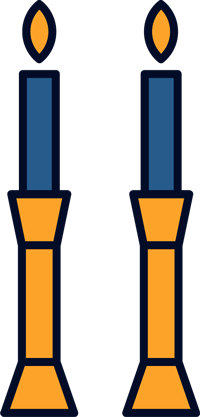
Every Friday night, Jewish women light Shabbat candles to welcome the Sabbath (men can light them too in the absence of a Jewish woman).
Lighting Shabbat candles is a commandment that is exclusive to women. That’s why Shabbat candlesticks are considered to be one of the most appropriate Bat Mitzvah gifts for girls.
Kiddush Cup

A Kiddush cup is the cup Jewish people use when reciting the Kiddush blessing (the blessing over wine) before Shabbat or holiday meals.
We fill (literally) the Kiddush cup, recite the Kiddush blessing, say L’chayim (the Hebrew version for “cheers”) and take a sip from the cup.
Now you see why Shabbat meals are so much fun?
Kiddush cups are considered a common gift for both Bar Mitzvah boys and Bat Mitzvah girls, and arguably one of the few Jewish gifts that are suitable for both men and women.
Tree of Life

If you ever attend (or host) a Bar or Bat Mitzvah, odds are you’ll stumble into the mysterious Tree of Life at some point: whether it’s on the Bat Mitzvah invitation, part of the Bar/Bat Mitzvah decor, or most likely – when the girl gets brand new and shiny Bat Mitzvah Jewelry gifts.
Note: Tree of Life Jewelry is one of the most common Jewelry gifts on other occasions too: from birthdays, Jewish weddings and even anniversaries.
What’s the story behind this unique symbol?
The Tree of Life is an ancient Kabbalistic diagram that describes the 10 principles God used to create and manifest himself in the world. The principles are represented as 10 interconnected spheres (Sefirot) – that together form the Tree of Life.


Let’s go over each Sefirah and explain what they mean:
- Keter (כתר) – Crown: The divine conscious will that is beyond human comprehension. It is referred to in the Zohar as “the most hidden of all hidden things”
- Chochmah (חכמה) – Wisdom: The ability to seek and conceive wisdom. Chochmah is associated with the right brain hemisphere – the side responsible for creativity, imagination, and intuition.
- Binah (בינה) – Understanding: The principle of understanding, contemplating and deriving one matter from another. Binah is associated with the left brain hemisphere – the side responsible for logic, reasoning and analytical thought.
- Da’at (דעת) – Knowledge: Da’at is the symbol of unity. It acts as a bridge – connecting the top Sefirot of conscious divine intellect to the bottom 7 Sefirot of divine emotions. Da’at isn’t really considered an actual Sefirah… in fact, it doesn’t even appear in most depictions of the Tree of Life (notice the differences between the left Tree of Life and right Tree of Life images above). It’s more like the inflection point of the Ten Sefirot where intellect integrates with emotion and becomes one.
- Chesed (חסד) – Kindness: The ability to spread love and kindness towards God and other human beings.
- Gevurah (גבורה) – Courage: The ability to act courageously and discipline ourselves to channel our efforts properly.
- Tiferet (תפארת) – Harmony: The force integrating Chesed and Gevurah to achieve balance. It is the only sphere connected to the other Sefirot.
- Netzach (נצח) – Eternity: The strength, patience, and endurance required to withstand long periods of suffering to achieve victory.
- Hod (הוד) – Glory: The willingness to subdue ourselves to overcome obstacles, rather than “brute-force” our way through. This is the exact opposite of Netzach. It highlights the importance of judging when to use “force” on the one hand, and when to use “submission” on the other hand, without letting our egos cloud our judgment.
- Yesod (יסוד) – Foundation: The principle of connection between different ideas, skills and emotions to form a solid foundation.
- Malkhut (מלכות) – Kingdom: Our ability to bring potential into being and to translate conceptual ideas into action in the physical world. Malkhut is the only sphere that does not emanate from God directly, but rather from God’s creation. It’s on the receiving end of all the other Sefirot. It’s associated with the human feet – grounded into the earth.
Star of David

It’s about time we talk about the most widely recognized Jewish symbol in the world: the Star of David. Heck, you’ve already seen it a bunch of times on this page alone (there’s a Star of David in Amen V’Amen’s logo)!
Not only is the Star of David the most widely recognized Jewish symbol, but it’s also the favorite choice of Jewish Jewelry among both Jewish men and women.
Long before the Star of David made its way into the Israeli flag 🇮🇱, the famous Hexagram was already recognized as a powerful symbol in the Kabbalah.
According to the Kabbalah, God created man with 7 divine principles:
- Chesed (Kindness)
- Gevurah (Courage)
- Tiferet (Harmony)
- Netzach (Eternity)
- Hod (Glory)
- Yesod (Foundation)
- Malchut (Kingdom)
Sound familiar?
Look back at the Tree of Life diagram I mentioned earlier… Notice anything “weird”?
Yes, these are the exact same emotional principles that form the bottom 7 Sefirot of the Tree of Life. And if you look closely – you’ll notice that they’re shaped just like a Star of David.
The puzzle pieces are coming together… aren’t they?
Chai

No, I’m not talking about the Indian tea, silly!
Chai (חי) is the Hebrew word for “alive”. In Jewish numerology – the letters forming the word “חי” add up to the number 18. That’s why the number 18 holds a special meaning in Jewish tradition.
You’ll notice that both Chai and the number 18 are recurring themes in Bar & Bat Mitzvahs, and Judaism in general:
- We give monetary gifts in multiples of 18
- We wear Chai Jewelry (like this Chai necklace for example)
- We donate to charity (Tzedakah) in multiples of 18
Speaking of Tzedakah…
Tzedakah
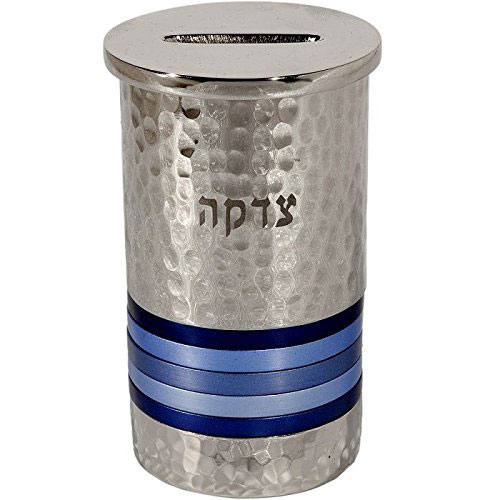
Tzedakah is the Hebrew word for charity. It’s considered by many to be one of the highest of all the Torah commandments, and one of the most cornerstones of Judaism.
The Torah commands every Jewish person to donate at least 10% (a tithe) of their income to charity… and that is after taxes!
That includes the Bar & Bat Mitzvah! Bnai Mitzvah usually give Tzedakah as part of their Mitzvah Project, where they choose an organization or cause they like, and contribute a portion of the money they get for their Bar/Bat Mitzvah, or even launch a fundraising campaign and invite their guests to contribute!
Hora Dance
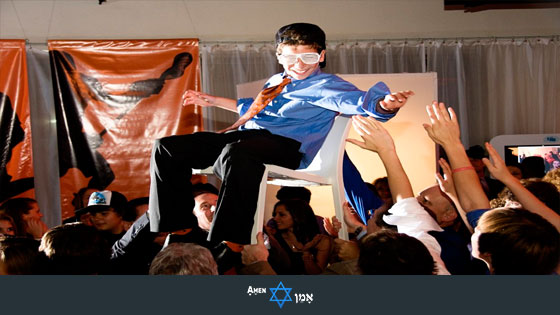
Ever seen people dancing on a chair? No?
Well, then you’ve never attended a real Bar/Bat Mitzvah party. The Hora Dance, aka the “Chair Dance” is a traditional Jewish dance where we lift the man (or woman) of the hour on a chair and dance around with them.
The funniest part is when the ones who lift up the Bar/Bat Mitzvah are so wasted that they the poor kid ends up going through a rollercoaster ride… and all of that after eating a delicious Bar/Bat Mitzvah meal… oy vey!
Some find the Hora Dance the most entertaining part of the entire party, others find it the most awkward part. Which camp you belong to often has to do with whether or not you’re the one who ends up sitting on the chair…
Conclusion
There you have it. 10+ fascinating Jewish symbols, and how they’re used in a Bar & Bat Mitzvah ceremonies.
I hope you enjoyed the journey down the rabbit hole… and if you’re attending a Bar/Bat Mitzvah anytime soon – I’m sure you’ll enjoy it more now that you know what these Bar & Bat Mitzvah symbols actually mean.
If you found this interesting – then share it, will ya? So that other people can tumble down the rabbit hole!
Till next time!
